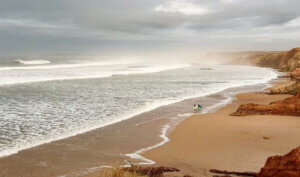Do you watch surfers and surfing with longing in your eyes? Do you dream of just getting out there and start riding those waves? Don’t let your age stop you from pursuing that dream. Learning to surf at 50 is absolutely possible. All you need is passion and dedication.
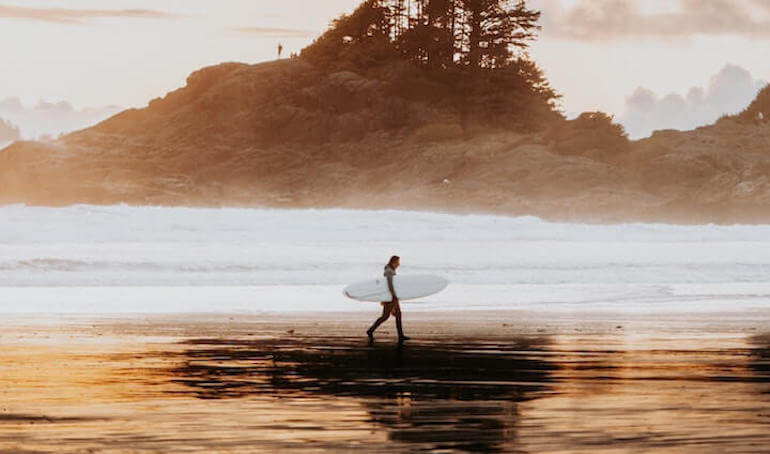
- 1 How to learn to surf
- 1.1 Keep your expectations realistic
- 1.2 Difficult but fun
- 1.3 1. Sign up for a surf camp
- 1.4 2. Do practice on your own
- 1.5 3. Learn to read the waves
- 1.6 4. Choose the right spot
- 1.7 5. Make sure you warm up before hitting the waves
- 1.8 6. Get comfortable in the ocean
- 1.9 7. Get to know the break
- 1.10 8. Improve your balance and flexibility
- 1.11 If needed: lose some weight
- 1.12 9. Find friends to go surfing with
- 1.13 Find other wannabe surfers
- 1.14 Keep practicing
- 1.15 10. Be nice to yourself
- 1.16 Consider body boarding
- 1.17 Learn to understand waves
- 1.18 11. Immerse yourself in surf culture
- 1.19 A lot of know-how
- 1.20 Final thoughts on learning to surf at 50
How to learn to surf
You might feel like a lot of my tips are not targeted towards surfers in their 50s.
That’s because the steps to becoming a surfer are the same for everyone.
The ocean doesn’t know your age.
(Don’t worry, I will give you plenty of tips specific to learning to surf at 50 as well.)
Keep your expectations realistic
I will let you in on a secret, (just don’t let it deter you), surfing is incredibly hard. Even young people struggle. Becoming a surfer takes time.
Whatever time frame you have in your mind, take that times ten and you get the real answer about the effort you will have to put in.
Difficult but fun
It might end up being the hardest thing you’ve ever done, at least on a physical level.
So when you learn to surf, don’t think about the end goal, instead, enjoy every moment. To learn to surf, you have to enjoy the process. Savor all those salty unexpected gulps of water and you will be on the right path.
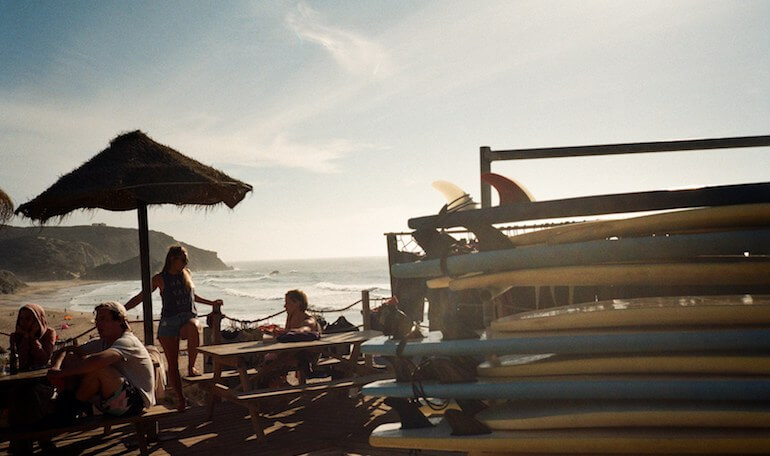
1. Sign up for a surf camp
Some things you can learn on your own, surfing however is not one of those things.
You will need a skillful instructor who explains the basic techniques and helps you feel safe in the water. For someone learning to surf at 50, I would even recommend a private surf instructor.
So, don’t hesitate, go ahead and book that surf camp today. You might even find other 50-plus students in the camp.
Learn about the proper equipment
A surf camp, or taking surf classes will make sure that you know which equipment to use. As a beginner surfer, you use big foam boards, so-called “Soft tops.”
The small nice-looking boards are for people who have surfed for a while.
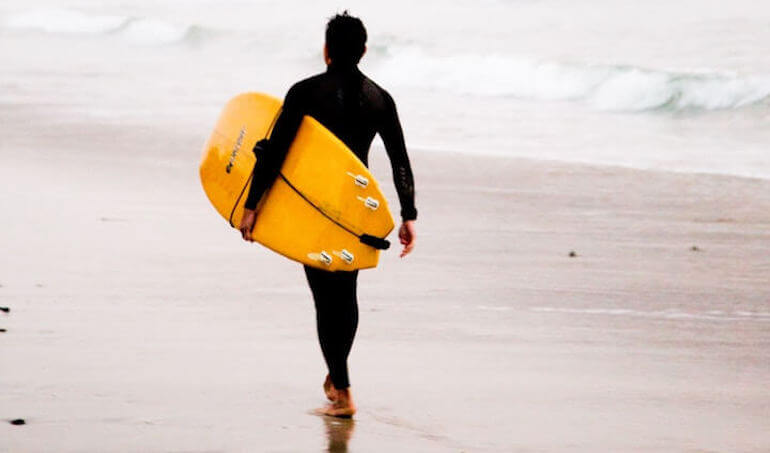
2. Do practice on your own
Two weeks of surf camp should be sufficient before you start trying on your own.
Some people get too attached to taking surf lessons, but to truly develop as a surfer you need to learn to make your own decisions. You need to practice being alone with the ocean.
Make your own decisions
You need to decide where to position yourself and which waves to go for. Even if your first time on your own is a total disaster, that’s the kind of steep learning curve you are looking for.
Ask for advice from surf instructors and local surfers about where and when to go.
If you don’t see any other surfers practicing on their soft-tops, don’t go out. Learning to surf is all about learning to understand which conditions are suitable for beginner surfers.
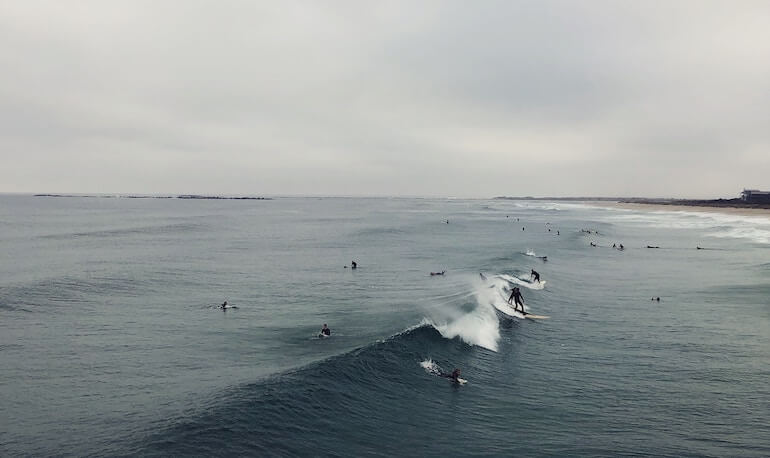
3. Learn to read the waves
What you lack in physical strength and flexibility you can make up for by reading the ocean.
When you watch surfers, it might appear that they are just sitting still, waiting for the waves to come to them.
But a good surfer will always move around and make small adjustments.
To successfully catch a wave is all about positioning.
If no waves are breaking, you are in the wrong spot.
Beginner surfers usually spend hours in the wrong spot. I get it, those crashing waves are intimidating. But if you haven’t cached anything in the last 10 minutes, it is time to move closer to the impact zone.
It’s better to catch whitewater than to catch nothing.
4. Choose the right spot
Surfing is not only about getting out there and spending time in the water, it is about all the steps you have to take to reach that point.
If you don’t live next to a beginner-friendly surf spot, you will need to find one and to allocate time to stay there.
50 percent of becoming a surfer is about finding a good spot to learn the sport. You will need mellow beginner friendly waves, there is no way around it.
Make sure you read my article Best surf spots for beginners.
You need to optimize your life for surfing
If you are over 50, hopefully you have more flexibility and more money. Put that success to good practice by investing in this dream of yours. The more time you can spend living next to a surf spot, the faster you will become a surfer.
To find your next surf destination, check out my article Cheapest place to learn to surf.
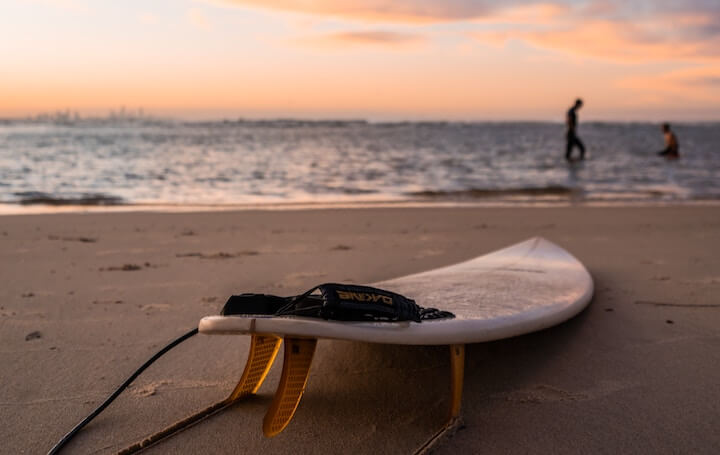
5. Make sure you warm up before hitting the waves
So here is one tip that only gets more important the older you get, in order not to hurt yourself, do plenty of stretching before you hit the water.
You might see kids rushing straight into the ocean. Those days are gone for both of us. Instead, watch the routine of a couple of older surfers. Don’t be afraid to imitate them.
Stretch and paddle in the air
Take a good 20 minutes to do different yoga poses and get your body ready before you go into the water. You will perform better the more you get your body warm and flexible.
When you are a beginner, do ten pop-ups on the beach before entering the water. It might look ridiculous, but this is one of the best ways to develop muscle memory on the pop-up.
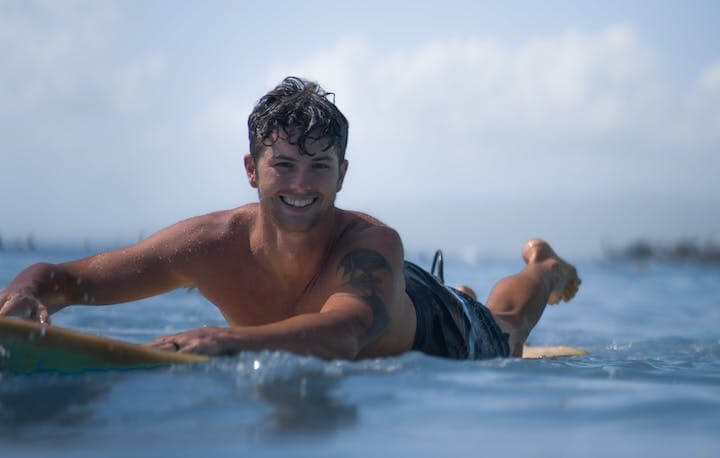
6. Get comfortable in the ocean
The more you feel in your element, the more confident you will feel and the more likely that you go for that dreamy wave.
Don’t beat yourself up if you spent a whole session watching other people surf. It is all part of the learning process. Familiarizing yourself with the behavior of the waves will allow you to catch them, eventually.
7. Get to know the break
To properly get to know a specific surf break takes months. But when you get there the ocean feels as familiar as an old lover. You know where the waves will break long before they actually break.
Spend time on the beach watching the break and the other surfers.
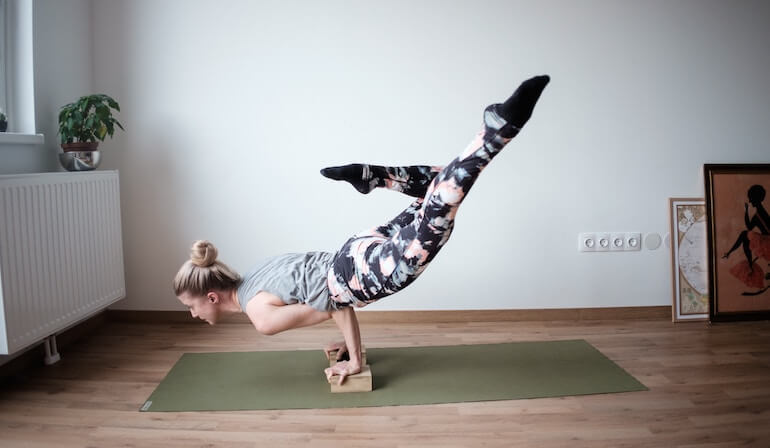
8. Improve your balance and flexibility
If you are not able to go surfing where you live, the best way to maximize your ability when you finally hit the surf, is by doing yoga or Pilates.
In fact, when lying on the surfboard you should keep your body firm and lift your chest; just like the yoga pose of the cobra.
If needed: lose some weight
Yes, I am going to go there. Surfing requires a lot of physical activity. When you surf in the correct way, you use pretty much all your muscles. Physical effort does become easier the less extra baggage you’ve got to carry around.
The good news is that if you succeed with becoming a surfer, you will get fit; it’s a two-for-one kind of deal.

9. Find friends to go surfing with
This is such an important aspect of learning to surf at 50, yet many people overlook it. You need people to inspire you. Surfing is about comradery and a joint effort to explore and get stoked together.
When we fail with something in life, it is often because we lack the proper support.
Find other wannabe surfers
In most surf meccas there are ride-share groups, women’s groups aimed at surfing, and a general surfing community.
Tap into this expression of surf culture and find like-minded people. This will help your surfing more than any YouTube video showing the proper techniques. (Do watch those as well.)
Keep practicing
I’m not going to sugarcoat the realities of learning to surf at 50, it will be a long and winding road.
You will feel like you don’t progress as fast as you were hoping. Well, sometimes you will feel like you are not progressing at all.
Learning to surf takes a huge effort, the good news is that every step of getting there can be enjoyable.
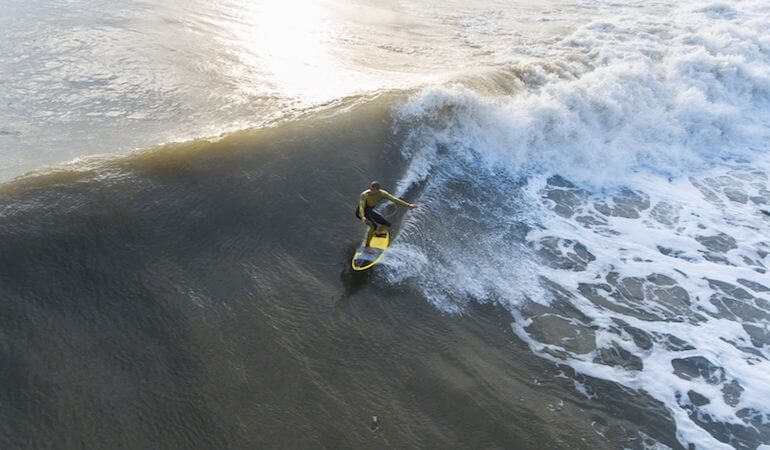
10. Be nice to yourself
The best surfer is the one who has the most fun.
This is a classic quote in surf culture, you will hear people saying it all the time. We need it, since surfing can be frustrating. The ocean will not always cooperate.
Don’t beat yourself up when you fall (and end up in the tumble dryer.) Instead, enjoy the process. That’s the only way, regardless of age.
Consider body boarding
If you made it this far, I will admit that many older surfers, even those who have been surfing for their whole life, switch to knee-surfing or body-boarding.
This is usually due to health challenges.
Learn to understand waves
Don’t take this as a defeat on their part, it tells you a lot of the allure of the ocean.
Even people who are not explosive enough to do the pop-up still go out there.
When you do body boarding you will get comfortable with the ocean and with catching ways.

11. Immerse yourself in surf culture
Surfing is not only about hitting the ocean and start catching waves.
It’s about learning to read the swell forecast; you need to know when the tide and size are favorable for your favorite break.
Surfing is also about picking a board suitable for your level, is about watching the waves and being able to tell how they will feel against your body.
A lot of know-how
On the surface surfing looks effortless, sliding down the glassy surface of the wave. But behind the curtain, there is actually a surprising amount of knowledge going on.
The more you understand this secret society of surfboard shapes and why the waves are better in the morning and evening, the likelier that you do indeed become a surfer.
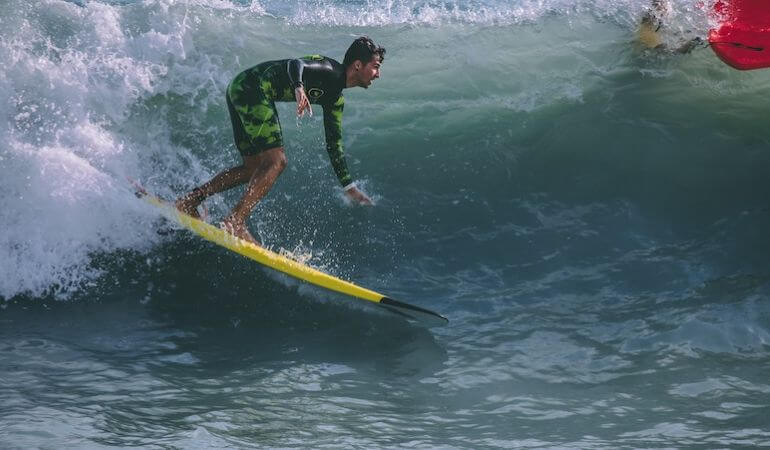
Final thoughts on learning to surf at 50
A lot of people learned to surf in their 50s. Some even achieved this dream in their 60s or 70s. Learning to surf, just like anything is about staying curious.
As you embark on this journey make me a promise, do pester your surf instructor and random surfers on the beach and make them explain everything about surfing for you.
Surfing is about connections. Connection with the ocean and with your fellow surfers.




